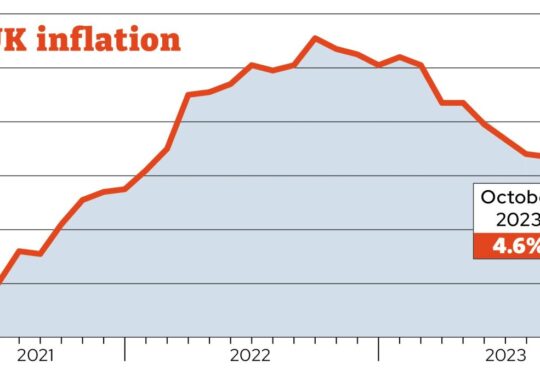
The UK state pension is unlikely to be enough to live on in retirement, which is why it’s important to build up your personal pension pot too.
You currently need an income of £23,300 a year to have a moderate standard of living in retirement. That’s an increase of 12% compared to last year to reflect the rising cost of living, according to the Pensions and Lifetime Savings Association.
But how much should you have in your pension to draw down that amount of income?
In this article we outline:
How much pension do I need in retirement?
One of the first steps to understanding how much you need in your pension pot is to think about what kind of lifestyle you expect to have when you retire.
If you plan on jetting off on luxurious holidays then you are going to need a higher income compared to someone who plans to spend most of their retirement gardening and reading books at home.
Think about your regular outgoings: will you have similar expenses when you retire as you do now? For example, most homeowners hope to have their mortgage paid off before they retire, reducing their outgoings.
One rule of thumb is to aim to have about two-thirds of your salary as annual income in retirement to maintain your lifestyle. So if you earn £30,000 a year, you might want to aim for a retirement income of £20,000.
If you’re a long way off from retirement age, it might be difficult to predict what your expenses will be or even what kind of lifestyle you may want.
The table below can give you an idea of how much you might need based on three different standards of living in retirement.
| Minimum | Moderate | Comfortable | |
|---|---|---|---|
| Income required | £12,800 a year | £23,300 a year | £37,300 a year |
| What you would spend your money on | -£54 a week on food -No car -£540 to spend on clothing and footwear each year -A long weekend and a week on holiday in the UK each year -£20 for each birthday present |
-£74 a week on food -3-year-old car replaced every 10 years -£791 to spend on clothing and footwear each year -2 week holiday in Europe and a long weekend in the UK -£34 for each birthday present |
-£144 a week on food -2-year-old car replaced every 5 years -£1,500 to spend on clothing and footwear each year -3 week holiday in Europe each year -£56 for each birthday present |
The figures above can give a useful indication, but remember if you’re decades from retirement then you should take them with a pinch of salt.
This is because the cost of living tends to go up each year, so you might need a higher level of income in the future to maintain the standard of living outlined above.
Yet understanding how much income you might need in retirement can help you work out how much you are likely to need in your pension pot and whether you’re on the right track.
How much pension should I aim to have in my 30s, 40s and 50s?
Say you’re aiming towards a moderate standard of living, with an annual income of £23,300, you would probably need a pension pot of between £200,000 and £240,000, according to the investment platform Hargreaves Lansdown.
This pension pot is the total amount of money from both personal pensions and workplace pensions. It also assumes that you have a defined contribution pension, where the value depends on how much you have paid in and how your investments have performed.
You would also need to be eligible for the full state pension which would top up your income from your own personal pension pots.
So how do you know if you’re on the right track?
If someone started contributing at 22, they would need to pay in £282.89 each month to have £200,000 in their pot by 66. This assumes that their contributions stay the same throughout their working life.
A decade later, at the age of 32, they would have £35,322 in their pension pot, assuming their investments grow by 5% each year, according to Hargreaves Lansdown.
After another ten years, at 42, their pension pot would have more than doubled to £74,626. By 52, the pot should have grown to £120,216.
In the table below we outline roughly how much you should have in your pension every decade to be on track to reach £200,000 by 66.
| Age | Amount in pot |
|---|---|
| 32 | £35,322 |
| 42 | £74,626 |
| 52 | £120,216 |
| 62 | £174,866 |
How much pension should I aim to save each month?
It’s never too late to start saving into your pension. But if you start saving later in life then your monthly contributions should be higher than if you had started saving sooner.
For example, according to Hargreaves Lansdown:
- If you started saving at 32, you would need to contribute £402 in your pot each month to get a £200,000 pot by 66
- But if you started saving at 42, you would need to contribute a larger amount of about £615 a month to have the same size pot by 66
- If you started saving at 52, just 14 years away from a retirement age of 66, you would need to save £1,122 each month
The figures above assume that your contributions stay the same until you are 66 and that your investments grow by 5% a year.
So how much would you each need to save on a monthly basis to have a retirement pot of £200,000?
When trying to figure out how much to pay into your pension, there is a rule of thumb you can follow:
- Take the age you start contributing
- Half that number and add a percentage sign to it
- That tells you how much of your salary you should contribute each year for the rest of your working life
So for example, if you start contributing at the age of 24, you will need to pay in 12% of your earnings each year.
Find out: How much should I pay into my pension?
How to save for your pension in your 20s
When you’re in your twenties, you have time on your side. Yet as retirement is so far away, pensions tend to become the last thing on your priority list.
It’s actually the best time to start investing because your money has plenty of time to grow and benefit from the power of compounding. Any money you invest in your twenties will become far more valuable than if you invested it later in life.
So once you have cleared any high interest debt and built up some savings for emergencies, you could start putting some spare cash into your pension.
“The sooner you think about retirement finances, the better,” said Zoe Dagless from investment platform Vanguard.
She used the following example:
- If you save just £262 each month from the age of 25, you will be able to accumulate more than £500,000 by the time you’re 65. That’s assuming the annual investment return over the next few decades is 6%
- She pointed out that just £125,000 of this £500,000 is from your contributions. This is because the remaining £375,000 is from investment growth which has benefited from the power of compounding over the 40 years that you have been invested
As you’re several decades from retirement, you also might want to invest in risky assets such as shares. This is because riskier assets give you the chance of earning a decent investment return and as you’re young enough, you have time to ride out any falls in the stock market.
If you have a workplace pension and you haven’t switched away from the default investment fund then it might be possible to change the level of risk. You can usually do this online by logging into your pension provider’s website.
How to save for your pension in your 30s and 40s
If you’ve moved up the career ladder, you might have a higher salary than when you were younger. With that said, it could be that a big proportion of your income is now spent on expenses like mortgages or childcare.
But if you have got some spare cash, earned a bonus or received a pay rise, consider contributing some extra money into your pension.
If your employer offers to match your pension contributions then this can be worthwhile as it’s effectively like getting a pay-rise. If you’re self-employed, you might want to open or top-up a low-cost self-invested personal pension.
You’re still a few decades away from retirement, so it still might be worth investing in a higher level of risk. By investing in assets like shares they can give you the chance of higher returns. You still have plenty of time to ride out any stock market wobbles.
By the age of 40, many of us will have several pension pots. This is because every time you start a new job, your employer will have set up a pension for you under the auto-enrolment scheme.
So it might be a good time to think about consolidating your pension pots to make them easier to manage and potentially reduce the fees you’re paying too.
How to save for your pension in your 50s and 60s
With more years of work behind you than ahead of you, it’s time to look at the big picture.
We mentioned above that if you’re decades away from retirement then you can afford to take on a higher level of investment risk. The reverse is also true: so as you get closer to retirement you might want to reduce the level of risk you’re taking on.
This is because when you cash in your pension investments, you are crystallising the price you’ve sold it for. So if stock markets are falling when you need access to your pension then your investments will be worth less than if you withdraw your pension when markets are rising.
If stocks markets plunge then you could even end up crystallising losses.
So if you’re only a few years away from retirement then you might want to invest in less risky assets such as bonds. Dagless pointed to one traditional approach which is that the percentage of bonds in your portfolio should match your age.
For example, at the age of 50, 50% of your portfolio could be in bonds – preferably government bonds.
If you don’t feel that you have enough in your pension pot to meet your goals, you may be tempted to make riskier investments. However, Dagless said: “Instead you may want to consider contributing more to your pension in the last few years of your working life or look at ways to reduce your overheads.”
If you have a workplace pension and you haven’t switched away from the default investments then you will probably be invested in a “lifestyling fund”. This is where your pension provider automatically moves you away from higher risk assets like shares towards less risky assets like bonds in the years before retirement.
But even if you are in a lifestyling fund where the strategy is managed for you it’s important to keep checking that your investments still meet your needs.
How to save after retirement
As you get closer to retirement age, you need to think about how you plan to withdraw your pension fund when you stop working.
Helen Morrissey from Hargreaves Lansdown said you might have a different strategy depending on if you plan to use income drawdown as opposed to buying an annuity.
With income drawdown, you withdraw money from your pension and leave the rest invested. So Morrissey said you might want a large proportion of your pension to be invested in shares to give it the best chance of growing.
Find out: Should I go for an annuity or drawdown? Plus, here are our favourite pension drawdown providers.






